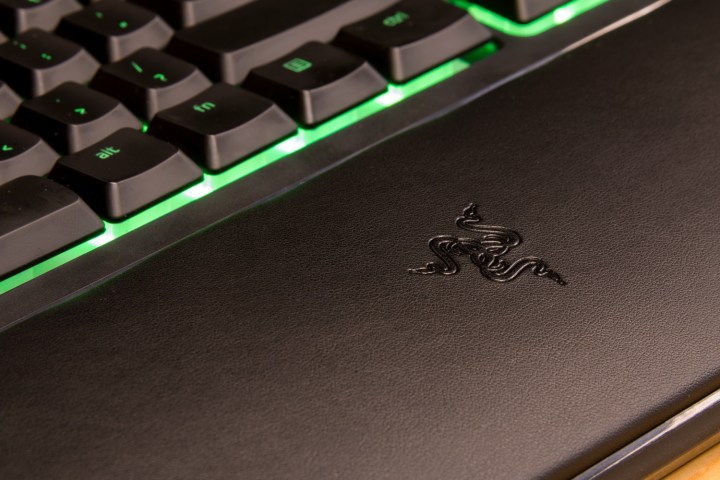Razer’s Ornata offers membrane users a solid bridge to mechanical keyboards.
There’s a massive war being fought in the keyboard world. Typists and everyday office-workers still prefer the quiet, flat touch of a membrane-based option, while gamers insist individual mechanical switches are the only way to go. There was no middle ground – until now.
Razer is unleashing its newest creation, the Ornata, as the compromise between the two sides. A membrane underlay provides long-lasting, low-profile typing, while mechanical components provide the satisfying click and audible feedback gamers are used to.
It’s certainly an unique offering, but can it really convert fans of mechanical switches?
Looks like a membrane
The Ornata is a full-sized keyboard with a very traditional layout and a numpad. There are no dedicated media or gaming keys, although there are the usual macro options and function set, if you need to make some adjustments.
Its matte black aesthetic stays true to Razer’s usual look, but with a bit less extra gloss and flair around it. The keycaps are lower slung as a result of the lower profile switches. It’s the kind of keyboard that would fit in just as well in an office as next to a gaming rig.
As usual, the Ornata is fully equipped with Razer’s per-key RGB backlighting, which the company calls Chroma. We normally evaluate backlighting partially by how much it bleeds out from behind keycaps. In most cases, we like to see light coming through the symbols, and not escaping out from under the keys. Razer embraces just the opposite, purposefully filling the channels between the keys with full, colorful light.
In the Ornata’s case, the light shines up through a white, translucent piece of plastic that covers the underlying membrane, instead of splashing off the black, glossy plastic that’s usually under the keys. On something like the BlackWidow, that means bright, shiny colors that ram up against each other. On the Ornata, the effect is much mellower as the membrane underneath diffuses the light. It’s still an attention grabber, and it’s nice to see lighting that’s different from the norm.
The Ornata also includes a detachable magnetic palmrest. It has a soft touch, faux leather finish that’s both attractive and comfortable. The cushioning is thin, but sufficient, and springs back quickly even after long sessions. Our only gripe is that the magnets aren’t strong enough to hold the palmrest to the front of the keyboard unless they’re both sitting flat on the table.
Feels like a mechanical
Despite their Frankenstein-esque construction, the switches feel great. They might be a touch on the heavy side, but key action is as quick as any mechanical, and the activation point is easy to find.
These mecha-membrane switches are certainly cool and new, but they’re still a compromise.
There’s an audible click to each tap, too. It’s loud enough, and toned correctly, so that users with a Chery MX Blue keyboard will feel right at home. Even if travel is still a little mushier than those mechanical switches, the Ornata is responsive. Over most of the membrane keyboards we’ve tested, even Razer’s own options, this keyboard offers a number of improvements.
While it features unique switches, the Ornata is priced to compete directly with entry-level mechanical keyboards. The base price is $80, or $100 if you go for the version with Chroma customizable backlighting.
Mechanical keyboard users, particularly gamers, already have what they want with their Cherry MX, Romer-G, and Razer switches. These mecha-membrane switches are certainly cool and new, but they’re still a compromise. That means the Razer is more than capable of winning over membrane users, even if they won’t be that appealing to mechanical enthusiasts.
Highs
- Totally unique product
- Quick, responsive switches
- Attractive backlighting
- Understated design
Lows
- Still a compromise for mechanical users
- No dedicated media or gaming keys





